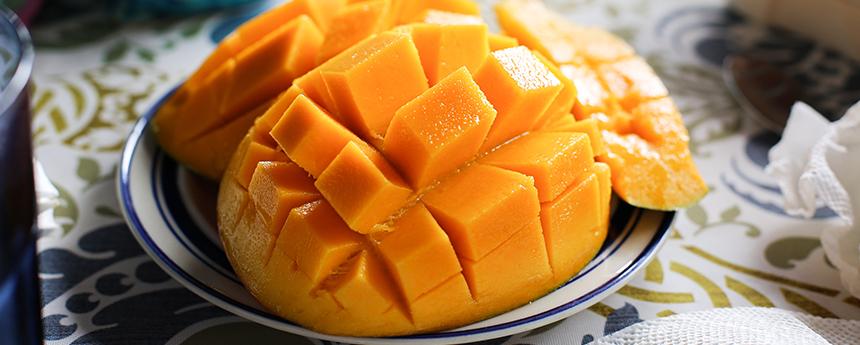- 2022-12-30
Mango Cultivation
Basic information
1. The temperature
The optimum temperature for mango growth is 24-30℃, and the growth stops below 15℃. It can endure the high temperature of 48℃ in a short time.
Economic cultivation of mango, suitable for the average annual temperature of more than 20℃, the minimum monthly average temperature of more than 15℃, the absolute minimum temperature of more than 0.5℃.
2. Water
Mango trees are resistant to moisture and drought, and can grow in areas with annual precipitation of 700-2000mm.After two to three days of flooding, mango trees' vegetative growth slows, and after four to six days 45% of the trees die.
3. Lighting
Wet weather can affect flowering and pollination.
Lack of light results in slow fruit growth and off-color skin.
4.Soil
Mango is cultivated in loam with deep soil layer, good drainage and ph5.5-7.0, and saline-alkali soil is not suitable for planting.
Choose salt-tolerant varieties and rootstocks.
5. The wind
High winds often cause bruising on leaves and fruit surfaces, leading to infection. Plant shelter in areas with high winds.Windbreaks are not necessary in areas with low winds, which can increase humidity and cause disease.

Cultivation of guide
1. When the seedling height is more than 60cm and the diameter is 1cm at 5cm above the grafting mouth, transplanting can be carried out.
2. Plant row spacing is 3.5m*4m or 3.5m*4.5m, and 45 plants are planted for every 667m2.The planting ditch should be 0.8-1.0m deep and 1.0m wide.
3. Soil improvement includes deep ripening, thickening of soil layer, acid soil application of lime and organic fertilizer, etc.
In the first two years of mango planting, the root growth was less, and the lateral root growth in the third to fifth years exceeded the projection range of the canopy.
In the second year after planting, the soil should be widened and improved to turn the soil deeply.
4. Young mango orchard more open space, can be planted in the gap leguminous plants, such as peanuts, soybeans and ryegrass.
5. Mango in the fruiting period has a larger demand for each large number of elements, and the balance of elements is more important than the number of single elements.
6. Apply fertilizer to sapling for a few times, and apply thin fertilizer frequently, once every 1-2 months.
Fertilization before and after fruit harvesting and in winter is the key to year-round fertilization, accounting for 70% of the total annual fertilizer application.
7. When the seedling height is 60-80cm, cut short, leaving 3-5 side branches as main branches.The main branch may be truncated again at 30-50cm, leaving 2 branches per main branch.
The main pruning method is to cut short fruit-bearing branches, and to remove cross branches, overlapping branches and over-dense branches.
8. The methods of controlling winter shoot to promote flowering include root cutting, ring cutting, etc., and growth retardants and flowering promoters can also be used.
9. Mango bagging can prevent diseases, insects and mechanical friction, improve skin coloring and reduce the use of pesticides.
For small and medium-sized fruits, paper bags of 22cm*15cm can be used, while for large fruit varieties, paper bags of 30cm*20cm can be used.Bagging materials include double paper bags and single waterproof bags.
Bagging time is the second physiological fruit after about half a month to complete.
10.When the fruit reaches the original variety size, the color of the fruit changes from dark to pale, and the fruit base sinks, the fruit is basically mature.The fruit is placed in water, and when it sinks or half-sinks, it is ready for harvest.




















